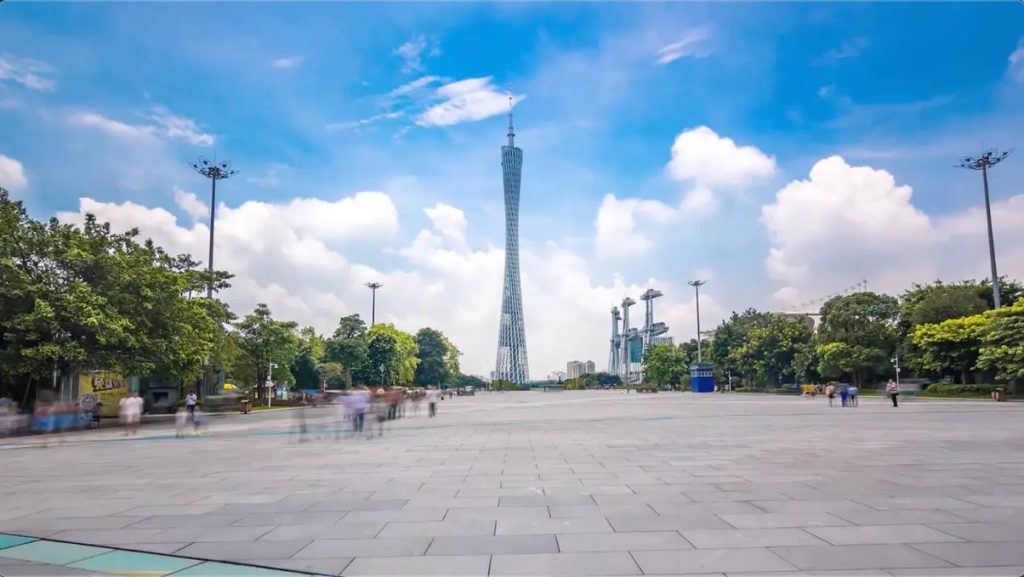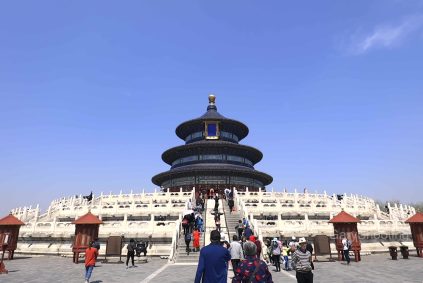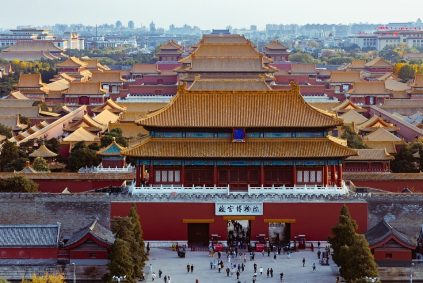Exploring Guangzhou’s Ancient Heritage Sites: A Journey Through Time
広州, one of China’s oldest continuously inhabited cities, boasts a rich tapestry of historical landmarks that reflect its significance as a trading port, cultural crossroads, and imperial stronghold. From ancient temples to centuries-old city walls, these sites offer glimpses into the region’s storied past. Traverse winding alleys, climb stone staircases, and wander through lush gardens to uncover the layers of history embedded in Guangzhou’s urban fabric.
六本のガジュマルの木の寺院: A Sanctuary of Buddhist Art and Architecture
Iconic Pagoda and Serene Courtyards
に設立 537 CE, the Temple of the Six Banyan Trees is renowned for its Flower Pagoda, a 57-meter-tall structure with intricately carved eaves and vibrant ceramic tiles. The pagoda’s name derives from its resemblance to a blooming lotus, a symbol of purity in Buddhism. Stroll through the temple’s courtyards, where ancient banyan trees provide shade over stone statues of deities and meditation pavilions. The central hall houses a massive bronze Buddha statue, surrounded by flickering oil lamps and offerings left by devotees.Historical Significance and Cultural Events
Originally built to house Buddhist relics brought from India, the temple has survived wars, renovations, and centuries of pilgrimage. Its name changed multiple times before being finalized in the 10th century, inspired by a poem by Su Shi, a celebrated Song Dynasty scholar. 今日, the temple hosts regular ceremonies, including chanting sessions and traditional music performances. Visitors can participate in meditation workshops or observe monks performing rituals, gaining insight into Buddhist practices in southern China.Artistic Treasures and Hidden Corners
Explore the temple’s lesser-known halls to discover frescoes depicting scenes from the Buddha’s life, along with calligraphy by ancient masters etched into stone tablets. The rear garden features a tranquil pond with koi fish and a pavilion dedicated to the Goddess of Mercy. Climb the pagoda’s narrow staircase for panoramic views of the surrounding city, juxtaposing ancient architecture with modern skyscrapers. Early mornings offer the best chance to experience the temple’s calm before crowds arrive.
The Ancient City Wall: Traces of Imperial Guangzhou
Remnants of Ming Dynasty Fortifications
Stretching over 1,100 メートル, Guangzhou’s ancient city wall dates back to the Ming Dynasty (1368–1644) and once encircled the entire urban core. 今日, several well-preserved sections remain, including a 200-meter stretch near Zhongshan Road. Walk along the weathered stone battlements to imagine the wall’s original grandeur, with watchtowers and gates that controlled access to the city. The wall’s thick foundations and arrow slits reveal its dual purpose as a defensive structure and a symbol of imperial authority.Gate Towers and Historical Layers
The Zhenhai Tower, now part of the Guangzhou Museum, stands as the most prominent remnant of the wall’s gates. 内蔵 1380, this five-story tower offered commanding views of the Pearl River and surrounding plains, crucial for monitoring trade ships and potential invaders. Inside the museum, exhibits detail the wall’s construction techniques, historical battles, and its role in shaping Guangzhou’s urban layout. Nearby, fragments of the wall merge with modern buildings, creating a striking contrast between past and present.Urban Legends and Local Lore
Legend claims that the wall’s stones were sourced from a nearby mountain said to be inhabited by dragons, imbuing the structure with protective magic. Locals also recount tales of secret tunnels beneath the wall, used by rebels or smugglers during times of conflict. While such stories remain unverified, they add a layer of mystique to the site. Photographers often capture the wall at sunset, when golden light highlights its textured surface and casts long shadows over adjacent parks.
陳氏祖霊殿: 嶺南の職人技の傑作
Architectural Splendor and Cultural Symbolism
Constructed in the late 19th century by the Chen family, a powerful lineage from Guangdong Province, this ancestral hall spans 13,200 square meters and combines residential, ceremonial, and educational functions. Its design features intricate wood carvings, brick sculptures, and colorful ceramic decorations known as chiwen, mythical creatures believed to ward off fire. The hall’s layout follows feng shui principles, with courtyards, 池, and bridges creating a harmonious flow of energy.Decorative Arts and Historical Exhibits
Each section of the hall showcases specialized craftsmanship. The front gate displays elaborate stone carvings of lions and phoenixes, while the interior halls feature murals depicting folk tales and historical events. The “Folk Craft Museum” within the complex exhibits traditional Guangdong arts, including embroidery, 切り絵, and ivory carving. Look for the “Hundred Birds Court,” a courtyard lined with wooden beams carved into birds in flight, symbolizing prosperity and freedom.Gardens and Tranquil Retreats
The ancestral hall’s gardens blend Cantonese design with natural elements. Wander through pavilions connected by zigzag bridges over lotus ponds, or pause under pergolas draped with wisteria. The gardens once served as spaces for family gatherings and scholarly discussions, and today they provide a peaceful escape from the city’s hustle. Seasonal blooms, such as azaleas in spring or chrysanthemums in autumn, add vibrant colors to the landscape.
シャミアン島: Colonial-Era Relics Along the Pearl River
19th-Century Architecture and International Influence
Once a foreign concession occupied by British and French traders, Shamian Island retains over 150 colonial-style buildings, including grand mansions, churches, and banks. Stroll along tree-lined avenues to admire pastel-colored facades, wrought-iron balconies, and shaded verandas. The island’s layout reflects Western urban planning, with wide boulevards and public squares contrasting with Guangzhou’s denser traditional neighborhoods. Many buildings now house museums, art galleries, or cafes, blending historical preservation with contemporary use.Cultural Landmarks and Historical Narratives
Visit the Our Lady of Lourdes Chapel, a Gothic-style church built in 1892, or the British Consulate’s former headquarters, now a cultural center. Interpretive plaques scattered across the island provide context about its role in the opium trade, missionary activities, and diplomatic relations. The island’s wharves, once bustling with merchant ships, now offer views of modern cargo vessels navigating the Pearl River, linking past and present maritime trade.Waterfront Promenades and Local Life
Shamian’s riverside promenade is a popular spot for jogging, cycling, or simply watching the sunset over the water. Street performers and artists often set up near the central fountain, while couples pose for wedding photos against the backdrop of historic buildings. The island’s parks and gardens host morning tai chi sessions and afternoon chess games, reflecting its integration into daily life. Explore side streets to discover hidden courtyards and quiet corners untouched by tourism.
Guangzhou’s ancient heritage sites invite visitors to slow down and appreciate the layers of history woven into the city’s landscape. Whether tracing the contours of a Ming Dynasty wall, admiring the carvings of a ancestral hall, or reflecting in the gardens of a colonial-era island, these destinations offer profound connections to China’s past. Wear comfortable shoes, bring a camera, and let curiosity guide you through the echoes of centuries gone by.
















